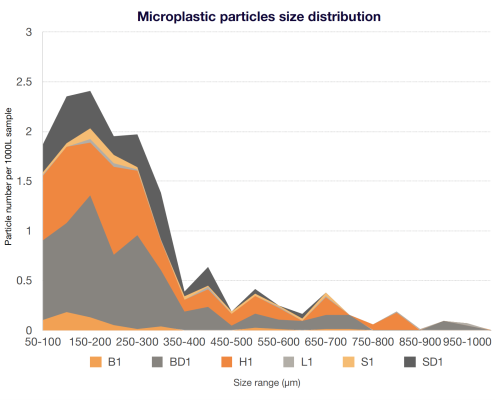Project Deep See has a completely different pioneer perspective to discover how the level of pollution could be distributed in different depths of the sea. For that reason, our technical support team (Zibel) has identified a possible modification on the set up of the Manta-net (50μm mesh size). The new technique allows stable sample collection at certain depths (with no physical limit), without losing representativity. We executed horizontal tow sampling by maintaining the Manta net at a stable depth (6 ±1m and 10 ±1m) in a parallel position, by setting up the perfect balance between the weighting of the frame of the Manta net and the speed of the tugboat to keep the net tight.
In parallel, we have collected surface MP samples too, at the same locations, as references to be able to compare surface MP abundances and composition with mid-water ones in the same area. During the mid-water sampling, water was filtered through the Manta net as at the surface, and this was monitored through the flow meter attached to the net; the preservation of the collected samples was ensured by closing off the cod-end (part of the Manta-net where the sample is collected) once the collection time has expired.
We choose two areas where to test the pioneering methodology: one impact site, which is subject to a sewage outfall, at Xgħajra, located off the south-eastern coast of Malta and a control site at (Selmun), located off the north-eastern coast of Malta.






